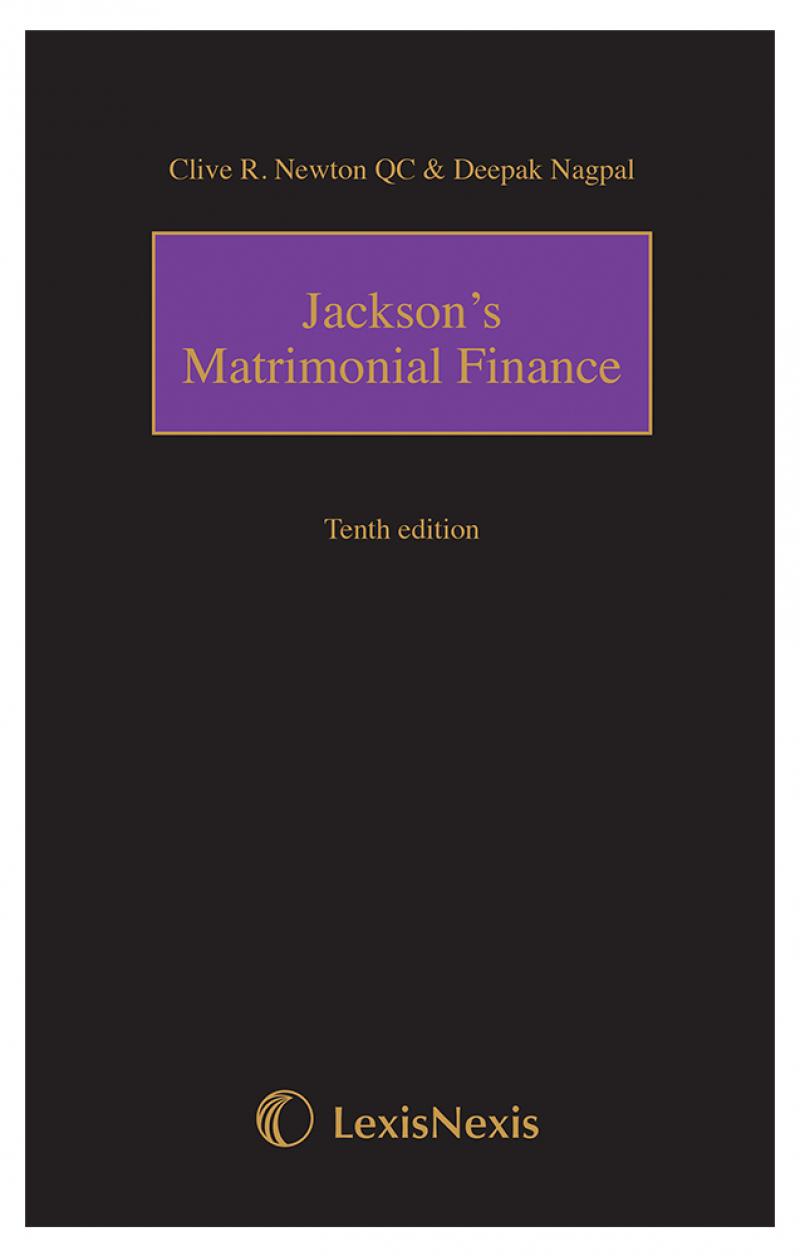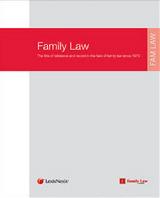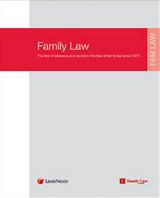family law, set aside, procedural quagmire, family proceedings, supervening events, divorce
Family proceedings: material changes of circumstances
Procedural law in the family courts is in a mess where
family circumstances change within a short time (say up to a year) after an
order, or there are circumstances which come to light which make an order
appear wrong (non-disclosure, fraud, mistake) – collectively known by lawyers
as ‘supervening events’. The procedural consequences of such material changes
of circumstances has been described by Sir James Munby P as a ‘quagmire’ –
repeating his words from
L v L [2006]
EWHC 956 (Fam), [2008] 1 FLR 26 (at para [39]) – in
CS v ACS (below). Can the court which made the order be asked to
put things right? If not, can application be made to an appeal court? If so,
how is this to be done; that is, how is the ‘quagmire’ to be forded?
The common factor in all this is that a family court – the
High Court, Family Division or the Family Court – has made an order in family
proceedings. The order may be in children or financial proceedings; and it may
be by consent or following contested proceedings. A party to those proceedings
seeks review of the order.
Different terms are used – appeal, set aside of orders,
revocation, variation – in statute law and the rules. However, what is being
requested of the court is that an order is set aside and a retrial or fresh
hearing ordered.
Set aside and appeal
out of time: recent case law
The questions which these set aside issues raise have been
considered in three recent cases at senior courts level (all in April 2015):
(1) In
CS v ACS & Anor [2015] EWHC 1005 (Fam) (16 April 2015) Sir James Munby P
sitting as a judge of the High Court considered a consent order in financial
proceedings where, it was said by a wife that her husband had not provided full
relevant financial disclosure. The question for the court was whether the wife
had been correct to apply back to the court which made the order? The President
said she was; but seems to have overlooked the constraints which may arise from
Senior Courts Act 1981, s 17 (‘SCA 1981’: see further below).
(2) In
Re D (Children) [2015] EWCA Civ 409 (30 April 2015) the Court of
Appeal heard a local authority’s appeal against a judge’s order, where he had
allowed an appeal long out of time against a district judge’s care order. The
court was critical of the free-ranging approach to a parents appeal against an
earlier care order; and of where, as a matter of law, the judge had held that
the district judge was wrong not herself to consider whether older children’s
evidence on which the care order was based should be tested. The court doubted
that the law could be said to go so far as to require such a consideration by
the court (
Re W (Children) (Abuse: Oral Evidence) [2010] UKSC 12, [2010] 1 FLR 1485, paras [46]-[52]). The
main criticisms of the procedural approach adopted by the judge were that he
did not require the parents (in person before him) to follow appeal procedures
set out in Family Procedure Rules 2010 Part 30, and to proceed on a clearly
pleaded appeal case of which all parties were aware and to which they could
address their cases in court.
(3)
Critchell v Critchell [2015] EWCA Civ 436 (30 April 2015) was a
relatively routine application under the jurisdiction in
Barder v Barder (Caluori Intervening) [1988] AC 20, [1987] 2 FLR 480 where a consent
order was said to have been invalidated by subsequent events, namely by a
legacy and forgiveness of a debt received by a husband shortly after the order
had been made. The Court of Appeal agreed that the appeal judge had been
correct to hold that, on the facts of this case, that permission to appeal out
of time should be given and the appeal allowed (a
Mesher charge on the former matrimonial home transferred to the
wife was removed).
Critchell need
only concern this article further by a reference to the words of Black LJ (at
the conclusion of her judgment), which underlie all appeal out of time cases
under consideration here. She said that it was ‘well to remember’ what was said
in
Barder (page 493):
‘[22] … that the question before the court was a
difficult one because it involved a conflict between two important legal
principles and a decision as to which should prevail. One principle was that
cases should be decided, so far as practicable, on the true facts and the other
was that it was in the public interest that there should be finality in
litigation. The strength of this latter principle is to be seen in the
restrictive application by the courts, over the years sinceBarder, of the conditions laid
down in that case.’
General principles
All of these types of case start from the principles
re-affirmed by Black LJ above: that there should be finality in litigation: a
person should not generally be troubled by the same litigation twice (see eg
The Ampthill Peerage case [1977] AC 547).
However, so far as possible cases should be decided on the true facts (ie not
eg where material evidence was not considered below). (These principles are
likely to be part of the argument where permission to appeal has been given by
the Supreme Court in two alleged non-disclosure cases:
Sharland v Sharland [2014] EWCA Civ 95, [2014] 2 FLR 89 and
Gohil v Gohil [2014] EWCA Civ 274, [2015] 1 FLR 178.)
The route for applications to set aside a consent order was
summarised by Sir James Munby P in
CS v
MCS (above) at para [6] as:
- ‘A fresh action to set aside the consent order’
(and see de Lasala v de Lasala [1980]
AC 546, PC);
- an appeal, which he said needed ‘no
elaboration’: but see SCA 19981, s 17 below; and
- an application to the judge who made the order
(which is the course taken in CS and
approved by the President).
Application to ‘set
aside an order’: which court?
In
B-T v B-T
[1990] 2 FLR 1 Ward J (as he then was), in a judgment described by a five judge
Court of Appeal (in
Taylor v Lawrence
[2002] EWCA Civ 90, [2003] QB 528)
as ‘masterly’, explained the various courses open to an applicant in cases such
as this, and that the course chosen depended on the court in which application
was made. In 1990 family proceedings were in the High Court (as now) and the
county court under three different sets of rules. Since April 1984 there
remains a similar division in family courts as between High Court and the
Family Court, with one set of rules but differing statutory provisions (not
considered by either the president in
CS
nor by the Court of Appeal in
Re D).
In the High Court only, SCA 1981, s 17 prevents ‘applications
for a new trial’ – ie to set aside a decision – save on appeal to the Court of
Appeal (s 17(1)) ‘except where rules of court … provide’ (s 17(2)):
17Applications
for new trial
(1) Where any cause or matter, or any issue in any
cause or matter, has been tried in the High Court, any application for a new
trial thereof, or to set aside a verdict, finding or judgment therein, shall be
heard and determined by the Court of Appeal except where rules of court made in
pursuance of subsection (2) provide otherwise.
(2) As
regards cases where the trial was by a judge alone and no error of the court at
the trial is alleged, or any prescribed class of such cases, rules of court may
provide that any such application as is mentioned in subsection (1) shall be
heard and determined by the High Court.
Thus an application to set aside in the High Court must be
to the Court of Appeal which can then allow an appeal by a variety of disposals
which include (at Civil Procedure Rules 1998 (‘CPR 1998’), r 52.10(2)) to ‘set
aside or vary any order or judgment’ or ‘order a new trial or hearing’ (all
words echoed in s 17(1)).
In the Family Court only Matrimonial and Family Proceedings
Act 1984, s 31F(6) (which has effect from April 2014) provides as follows:
The
family court has power to vary, suspend, rescind or revive any order made by
it, including –
(a)
power to rescind an order and re-list the application on which it was made,
(b)
power to replace an order which for any reason appears to be invalid by another
which the court has power to make, and
(c)
power to vary an order with effect from when it was originally made.
In that part of FPR 2010 which deals with the ‘general case
management powers’ of the family courts (ie High Court and Family Court) r
4.1(6) provides as follows: ‘A power of the court under [FPR 2010] to make an order
includes a power to vary or revoke the order.’ So, says the President (in
CS v ACS at para [11]) ‘…
the family court (by virtue of section 31F(6)(a) and FPR 4.1(6)) has a general
power to "rescind" or "revoke" an order’; but to what
extent? He holds (at para [34]) that r 4.1(7) enables application
to be made to the original trial judge to set aside the order.
Procedure on appeal
or fresh application
In
Gohil (above)
the Court of Appeal considered fully the impact of s 17(1) on procedure in set
aside cases (at paras [57]-[61]); though ultimately they rejected Mrs Gohil’s
appeal. The President mentions to the passage in
Gohil, but limits his citation only to para [57] which refers only
to the power of the court to set aside for non-disclosure confirmed by
Livesey
(formerly Jenkins) v Jenkins [1985] AC 424, [1985] FLR 813.
The President therefore makes no specific reference to s 17.
He does not therefore explain how he distinguishes the position he finds in
CS v ACS from that described by Ward J
in
BT v BT; nor does he explain why
SCA 1981, s 17(1) does not apply, or why – if he says it does – MFPA 1984, s
31F(6) overrides s 17(1), at least in the High Court.
As to
Re D and any
family proceedings application to set aside or to appeal: if it is to be an
appeal (whether on
Barder or other
out of time principles) application is by procedure under FPR 2010 Part 30 (or
if to the Court of Appeal by CPR 1998 Part 52); and if by separate application
by FPR 2010 Part 23 in the original proceedings, or by fresh application under
FPR 2010 Part 19. And if fresh evidence is to be adduced on an appeal separate
application should be made in the appeal notice to adduce that evidence under
principles in
Ladd v Marshall [1954] 1 WLR 1489, (1954) FLR Rep 422.
The views expressed by contributing authors are not necessarily those of Family Law or Jordan Publishing and should not be considered as legal advice.











 10 APR 2025
10 APR 2025

 7 APR 2025
7 APR 2025

 9 APR 2025
9 APR 2025

 9 APR 2025
9 APR 2025

 9 APR 2025
9 APR 2025







